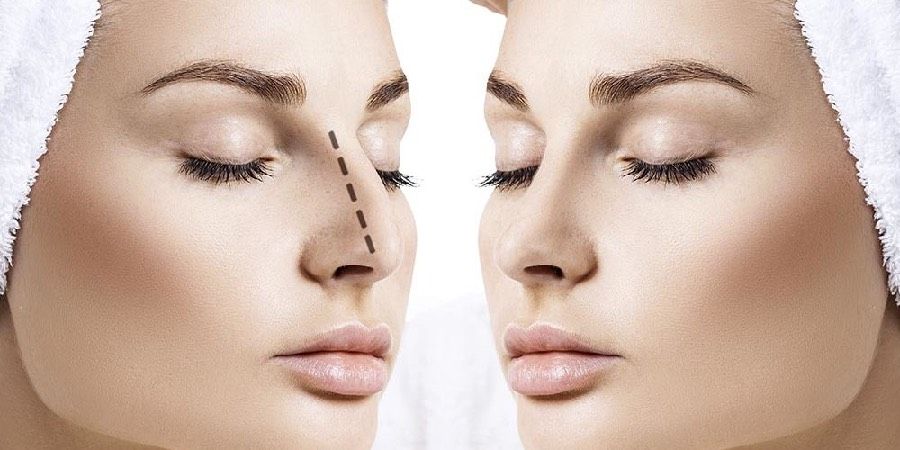Rhinoplasty
(Nose Aesthetics)

Rhinoplasty (Nose Aesthetics)
Rhinoplasty (nose aesthetics) is the name given to the operations performed on the bone and cartilage structure to change the shape of the nose. Nose aesthetic surgery is among the most frequently performed operations among plastic surgery operations. Rhinoplasty surgery is very common in both women and men.
Rhinopasty (rhinoplasty) is performed in order to eliminate congenital or subsequent structural defects in the nose or health problems that prevent people from breathing comfortably. Rhinoplasty is also performed if individuals do not like the appearance of their noses even though there is no problem in the nose.
The recovery process after rhinoplasty surgery varies according to the size of the surgery. After the rhinoplasty surgery, there is a possibility of staying under observation for 1 night as the doctor deems it appropriate. After an average of 1 month after rhinoplasty, 80% of the post-operative edema disappears.
Rhinoplasty (nose aesthetics) is performed due to health problems such as not being able to breathe easily or due to aesthetic concerns. Rhinoplasty is performed due to aesthetic concerns such as the nose being curved or crooked, excessively large or asymmetrical to the face.
If rhinoplasty is performed not because of aesthetic concerns but because of health problems, the surgery is performed at a much earlier age. If individuals do not like their appearance, rhinoplasty surgery is recommended to be performed after the age of 15, after the bone and cartilage structure has settled.
Rhinoplasty (nose aesthetics) is not applied to people with various ailments and diseases. The diseases that cause the unsuitability to the application of rhinoplasty are listed below.
? Sleep Apnea: Sleep apnea causes individuals to stop breathing during sleep. During rhinoplasty surgery, there are risks such as interruption of breathing for people with sleep apnea. For this reason, in individuals with sleep apnea, doctors are more careful when performing rhinoplasty and take precautions accordingly.
? Bleeding Disorder: Bleeding disorders such as non-coagulation of blood and non-stopping of blood flow pose a risk for rhinoplasty. Physicians may not find it appropriate to perform surgery in order not to encounter problems such as clot formation or non-stopping of blood flow in the operation area after the surgery.
? Body Dysmorphic Disorder: People with body dysmorphic disorder do not like their bodies, even though they do not have a disorder, and are extremely uncomfortable with their appearance. Body dysmorphic disorder, which is a psychological disorder, causes individuals to overgrow the slightest problem in their bodies. Therefore, people with body dysmorphic disorder should undergo a psychiatric evaluation before surgery.
Rhinoplasty (nose aesthetics) is an operation that is mostly performed under general anesthesia. While simple operations that require a small touch can be performed with local anesthesia, heavy interventions such as bone and cartilage correction are performed with general anesthesia.
How rhinoplasty surgery will be performed and which techniques will be used vary according to the structure of the nose and the preference of the doctor. There are two techniques that are generally preferred in rhinoplasty surgeries.
Before rhinoplasty (nose aesthetics) surgery, the use of drugs without doctor’s approval should be stopped. Unconscious drug use increases the risk of bleeding during and after surgery. However, smoking slows down the healing process after rhinoplasty. Therefore, it is recommended to reduce smoking before surgery.
Rhinoplasty (nose aesthetics) is an operation that needs attention after surgery as well as before surgery. After rhinoplasty, bruising around the nose and eyes and pain in the nose are seen. Regular use of pain relievers given by the doctor after the surgery will reduce the pain.
Rhinoplasty (nose aesthetics) is an operation that needs attention after surgery as well as before surgery. After rhinoplasty, bruising around the nose and eyes and pain in the nose are seen. Regular use of pain relievers given by the doctor after the surgery will reduce the pain.
It is recommended that people who have undergone surgery after rhinoplasty should be fed with liquid foods for a few days. In the post-operative period, movements such as drawing water into the nose or blowing the nose should not be done.